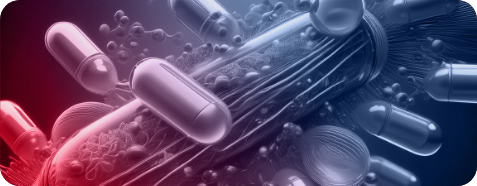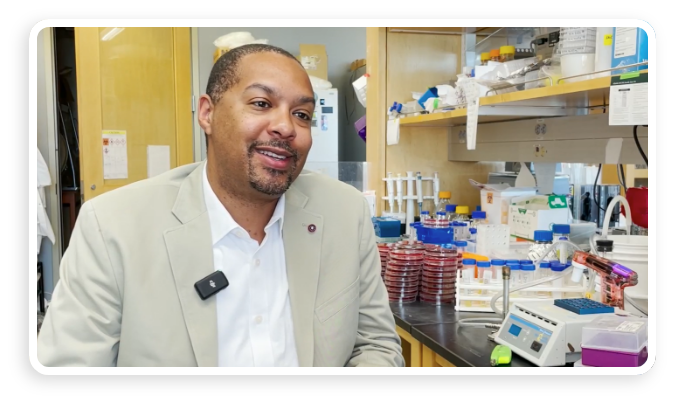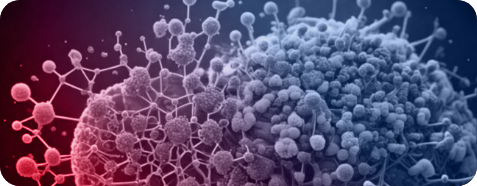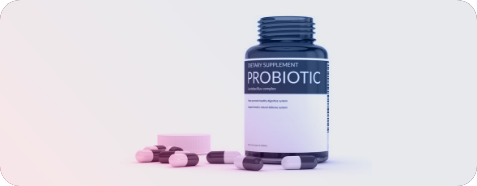Breaking microbial drug resistance through copper sequestration
We offer a novel tool for antibiotic treatment. Our approach targets a broad spectrum of bacteria but eliminates the risk of evolving resistance by targeting a multitude of pathways.
The Problem
Bacteria are evolving resistance toward standard-of-care antimicrobials at an alarming pace, thus creating urgency for novel therapeutic options. Further, many currently approved antimicrobials are unitaskers; they target a single protein or cellular component. If a bacterium mutates the targeted site while retaining function, the antimicrobial is significantly less effective against the new generation pathogen. Multi-drug resistant bacteria have evolved and the clinical community is in need for antimicrobials with novel modes of action.
The Solution
Our technology acts as a “trojan horse.” Bacteria need iron and generate specialized carrier molecules to gather iron. Our compounds mimics the carriers but deliver copper instead. While copper is ubiquitous and necessary for multiple mammalian systems to function, copper blocks multiple essential processes in the bacteria depending on iron. This dynamic creates a “Catch 22” for the bacteria; to escape the poisoning they have to mutate several independent iron import systems, but in doing so, their biological systems gets disrupted and they can’t survive. However, without mutation of these systems, they become intoxicated by copper and die. This requirement to mutate multiple pathways at once without disrupting the biological pathways, makes it less likely for bacteria to gain resistance against our technology.
The Opportunity
According to the CDC, antibiotic-resistant pathogens cost the U.S. healthcare system $21B-$34B yearly, resulting in more than eight million additional hospital days annually. Staphylococcus aureus and Streptococcus pneumoniae are amongst the worst offenders, leading to more than two million global deaths per year.
Worldwide, antibiotics represent a market around ~$50B with an expected growth of 5% through 2030. Our technology is disruptive because it can be produced as cheaply as conventional antibiotics without the imminent threat of losing effectiveness.
Status
This technology can kill 99+% of MRSA and Streptococcus pneumoniae in 4 hours and is effective as an inhalant against a lethal dose of Streptococcus pneumoniae pneumonia in a mouse infection model after just one dose. It is well tolerated in animal models, and the preparation of the active agent is straightforward to scale from laboratory to production. Further studies evaluate and support the efficacy of our approach are ongoing.
The intellectual property is covered through a patent for our core technology and derivatives that will be subject to further filings.
Meet the Team

MIchael D.L. Johnson PhD
College Of Medicine - Tucson

Peter Nestler PhD
Tech Launch Arizona
Contact us today.






